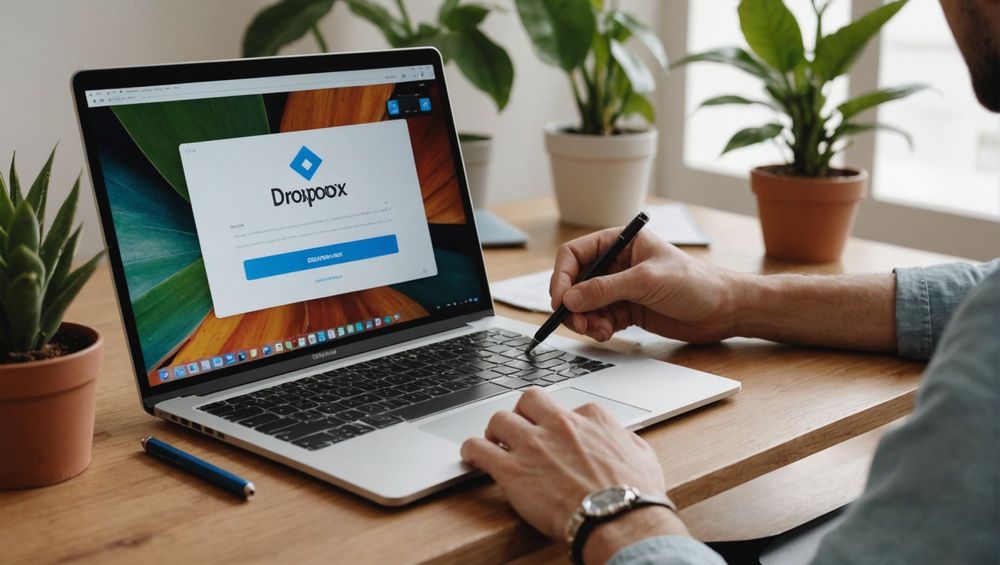What can businesses learn from Dropbox’s successful viral marketing strategy? The core of Dropbox’s growth story lies in its innovative referral program. To understand how Dropbox’s approach revolutionized user acquisition and brand loyalty, let’s dive into the key viral marketing lessons drawn from their experience.
The Power of Referrals

Dropbox’s referral program is the cornerstone of their viral marketing success. They utilized a straightforward approach: offer extra storage space to both the referrer and the person being referred. This mutually beneficial incentive created a powerful word-of-mouth effect, turning users into advocates for the brand. The result was an exponential increase in user base with minimal marketing costs.
There are several reasons why this strategy worked:
- High perceived value: Extra storage is a tangible and attractive incentive.
- Low friction: The referral process was simple, requiring only a few clicks.
- Social proof: Users trusted recommendations from friends and colleagues.
Creating a Product Worth Sharing

Before a product can go viral, it must be worth sharing. Dropbox ensured that their service was reliable, user-friendly, and solved a real problem. This organic appeal was critical because users felt genuinely compelled to share Dropbox with others, knowing it would be beneficial. By prioritizing product quality, Dropbox laid a solid foundation for their referral strategy to thrive.
This step involved:
- Identifying user pain points and addressing them directly.
- Regularly updating and improving the product based on user feedback.
- Ensuring seamless integration with other popular tools and services.
Simple and Clear Communication

Dropbox excelled in communicating the benefits of their referral program. Their messaging was clear, concise, and visually appealing. By making the value proposition easily understandable, Dropbox ensured that users were more likely to participate in the referral program. They utilized emails, in-app notifications, and social channels to spread the word effectively.
Key aspects of their communication strategy included:
- Clear call-to-action: Encouraging users to invite friends in a straightforward manner.
- Visual aids: Using engaging graphics and easy-to-follow instructions.
- Regular reminders: Keeping the referral program top-of-mind for users.
Leveraging Incentives
Dropbox’s referral success was amplified by the attractive incentives they offered. They chose a reward that was highly relevant to their audience—additional storage space. This was not only valuable but also directly enhanced the user experience. By aligning incentives with core product features, Dropbox ensured that the rewards felt meaningful and motivated users to spread the word.
To emulate this, businesses should:
- Identify incentives that resonate with their target audience.
- Ensure that the reward enhances the core product experience.
- Test and optimize rewards to gauge which incentives drive the most referrals.
Analyzing and Optimizing
Continuous improvement was a key part of Dropbox’s viral marketing strategy. They closely monitored the performance of their referral program and made data-driven adjustments. This iterative process helped them enhance the program’s effectiveness over time and respond to user behavior changes swiftly.
The steps to follow include:
- Track key metrics: such as referral rates, user growth, and engagement levels.
- Collect user feedback: to understand potential roadblocks and opportunities.
- Iterate and test: based on the data and feedback to continuously refine the program.
Conclusion
Dropbox’s referral program is a textbook example of how viral marketing can exponentially grow a business with limited investment. By creating a product worth sharing, leveraging relevant incentives, and maintaining clear communication, Dropbox successfully transformed their users into a powerful marketing force. Businesses aiming to replicate this success must focus on delivering unmatched value, understanding their audience, and relentlessly optimizing their strategies.
FAQ
How did Dropbox’s referral program work?
Dropbox offered extra storage space to both the referrer and the referred person as an incentive for sharing the service. This simple but effective method encouraged users to invite more people, leading to rapid user growth.
Why was Dropbox’s referral program so successful?
The program’s success can be attributed to its high perceived value, ease of use, and the social proof that came from personal recommendations. The extra storage space was a meaningful reward that directly enhanced the user experience.
Product quality was crucial. Dropbox provided a reliable and user-friendly service that solved real problems, making it worth sharing. This inherent value drove users to recommend it even without incentives.
How can other businesses create a successful referral program?
Other businesses can create successful referral programs by identifying meaningful incentives, ensuring the process is simple, and continuously optimizing based on user feedback and performance data. It’s also important to communicate the benefits effectively.
What are the key metrics to track in a referral program?
Businesses should track referral rates, user acquisition, engagement levels, and the overall ROI of the program. Collecting user feedback is also essential to identify areas for improvement and understand user motivations more deeply.
